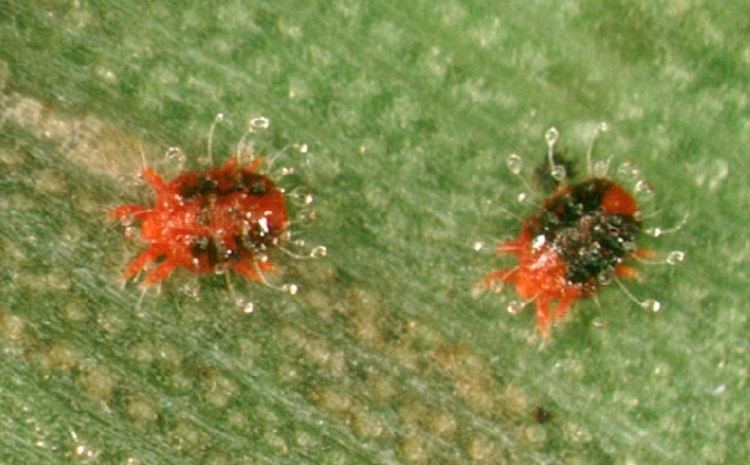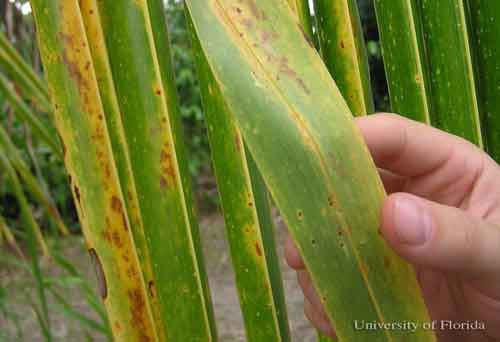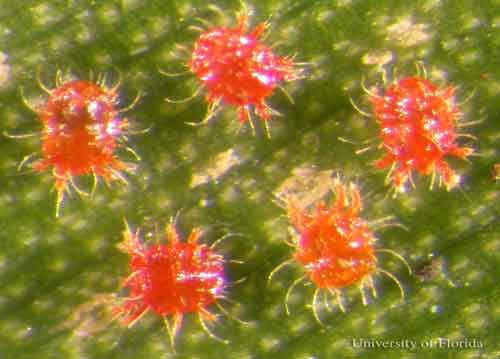Kingdom Animalia Genus Raoiella Phylum Arthropoda Rank Species Subclass Acari | Family Tenuipalpidae Scientific name Raoiella indica Higher classification Raoiella Order Trombidiformes | |
 | ||
Similar Tenuipalpidae, Amblyseius, Brevipalpus, Phytoseiidae, Aceria guerreronis | ||
Raoiella indica, commonly known as the red palm mite, is a species of mite belonging to the family Tenuipalpidae. A pest of several species of palm in the Middle East and South East Asia, it is now becoming established throughout the Caribbean. The invasion of this species is the biggest mite explosion ever observed in the Americas.
Contents

Distribution

This species is indigenous to Egypt, India, Iran, Israel, Mauritius, Oman, Pakistan, Philippines, Réunion, Saudi Arabia, Sri Lanka, Sudan, Thailand and the United Arab Emirates.

It is considered an invasive species in Dominican Republic, Guadeloupe, Puerto Rico, Saint Martin, Trinidad and Tobago, the US Virgin Islands, Granada, Haiti and Jamaica.

In 2007, the red palm mite was discovered in Florida. As of April, 2009, this pest has been found at almost 400 sites in five counties there.
Description
This species can be distinguished from most other mites by its colour, flat body, long spatulate setae, and droplets on the dorsal body setae. There is also a noticeable absence of the webbing associated with numerous other spider mites.
The red palm mite has a long, bright red, spatulate body. During all stages of life, this species is red, with adult females often showing black patches on their backs after feeding.
Red palm mite eggs are 0.12 mm long and 0.09 wide. The eggs are smooth and can be found in groups attached to the underside of leaves.
Larvae are 0.18–.020 mm in length and only have three pairs of legs. Nymphs are 0.18–0.25 mm long.
Adults are approximately 0.32 mm long. Females are larger than males and have a triangular body.
Life cycle
The egg stage ranges from 6 to 9 days. Development from egg to adult ranges from 23 to 28 days for females, and 20 to 22 days for males. The red palm mite lives for about 26 days.
Hosts
This mite has been found on 32 different palm species. In the Caribbean, this species also infests banana plants, heliconias and gingers.
Survey, detection and damage
The red palm mite forms colonies on the undersides of leaves. There, they feed on the contents of the cells of the leaves. This feeding can cause localized yellowing of the leaves.
Adults are usually visible to the naked eye.
Dispersal
Like most other plant feeding mites, this species disperses on the wind. Tropical storms and hurricanes can distribute this mite over wide areas.
Management
Chemical control is considered impractical due to the large size of most palms. Some biological control agents have proven useful in the Eastern Hemisphere, including predatory mites, beetles, lacewings and other mite predators.
